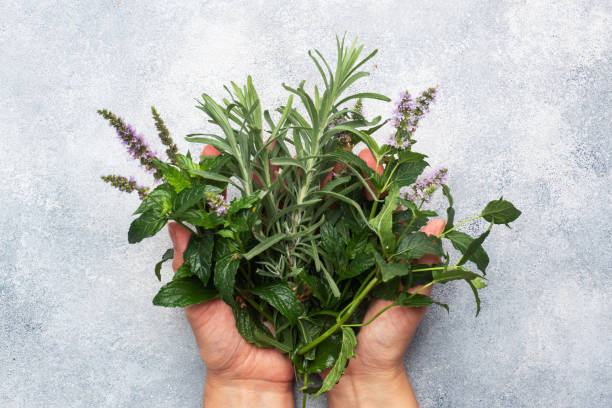Growing Your Own Herbs: A Beginner’s Guide to Cultivating Herbs at Home
As someone who loves spending time in the kitchen, I can’t imagine cooking without fresh herbs. The vibrant flavours they add to everything from pasta sauces to homemade salad dressings is simply unbeatable. That’s why growing my own little herb garden has become such an integral part of my culinary journey.
If you’re new to the world of herb gardening, the prospect of cultivating your own gourmet greenery might seem a bit daunting. But I’m here to tell you – it’s actually much easier than you might think! With a little know-how and the right plan, even total beginners can enjoy the incredible flavours of homegrown herbs.
In this guide, I’ll walk you through everything you need to know to get your very own herb garden up and growing. From selecting the perfect plants for your cooking needs to harvesting and preserving your bountiful herb harvest, you’ll be whipping up restaurant-worthy meals with your homegrown goodies in no time.
Choosing the Right Herbs for Your Kitchen

Growing Herbs for Cooking
The first step in starting a successful herb garden is deciding which varieties to grow. Of course, the classics like basil, rosemary, thyme, and parsley are always a safe bet. But don’t be afraid to get a bit more adventurous! There’s a whole world of unique and flavorful herbs out there that can really elevate your cooking.
Think about the types of cuisines and dishes you enjoy most. Do you love whipping up authentic Italian fare? Then you’ll definitely want to include fragrant herbs like oregano, marjoram, and sage. More of a Mexican food fan? Cilantro, epazote, and Mexican tarragon are must-haves. And if you’re a big fan of Indian curries, don’t forget about aromatic stars like cumin, coriander, and fenugreek.
It’s also worth considering herbs that have a wide range of culinary uses. Mint, for example, is fantastic in everything from refreshing summer cocktails to rich winter stews. Chives add a lovely oniony kick to baked potatoes, omelettes, and salads. And you really can’t go wrong with a classic like rosemary – it’s equally at home in savoury meat dishes as it is in sweet baked goods.
Planning Your Herb Garden Layout

Watering salad in raised bed in garden. Gardening in spring time.
Once you’ve decided on your herb lineup, it’s time to start planning out your garden layout. The great thing about Growing Your Own Herbs is that they’re quite versatile when it comes to space – you can tuck them into raised beds, containers, or even window boxes.
When laying out your herb garden, think about grouping plants with similar growing requirements together. For example, herbs that thrive in hot, dry conditions like rosemary, lavender, and sage can be planted in one sunny spot. Meanwhile, Growing Your Own Herbs that prefer a bit more moisture, like parsley, chives, and mint, can be clustered in a shadier area.
You’ll also want to consider the mature size of each herb. Sprawling, vigorous growers like mint and lemon balm are best kept contained in pots, while more compact varieties like thyme and oregano can be tucked into the edges of garden beds. And don’t forget to leave enough space between plants to allow for proper air circulation and harvesting.
Finally, think about the aesthetic appeal of your herb garden. Growing Your Own Herbs come in a gorgeous array of colours, textures, and growth habits that can really elevate the look of your outdoor space. Experiment with different planting combinations and companion plants to create a visually stunning (and delicious!) edible oasis.
Caring for Your Herb Garden

Growing Herbs for Cooking
Once your herb garden is all planted and ready to go, the real work begins! Proper care and maintenance is key to keeping your herbs healthy, productive, and bursting with flavour.
First and foremost, pay close attention to your watering routine. Most herbs prefer well-drained soil that stays consistently moist but not waterlogged. Use your finger to check the soil moisture – if the top inch or so is dry, it’s time to give your plants a drink.
Fertilizing is also important, especially for Growing Your Own Herbs in containers or poor soil. Look for an organic, slow-release fertilizer formulated specifically for vegetables and herbs. Apply it according to the package instructions, being careful not to over-fertilize.
Regular pruning and harvesting are essential too. Snipping off leaves, stems, and flowers not only provides you with a steady supply of fresh herbs, but also encourages new growth and prevents plants from going to seed too quickly. Just be sure to use clean, sharp scissors or pruners, and avoid cutting more than a third of the plant at a time.
And of course, keep a close eye out for any pests or diseases. Aphids, spider mites, and fungal issues can all wreak havoc on your herb garden. Employ organic control methods like companion planting, insecticidal soap, and baking soda solutions to nip problems in the bud.
Preserving Your Herb Harvest
One of the best parts about growing your own herbs is being able to enjoy their incredible flavours all year round. But with such a bountiful harvest, it’s important to have a plan for preserving and Growing Your Own Herbs for future use.
Drying is by far the easiest and most common preservation method. Simply hang bunches of herbs upside down in a cool, dark place with good air circulation. You can also dry herbs in a dehydrator or oven on the lowest setting. Once dried, store the leaves or stems in airtight containers for months of culinary enjoyment.
Freezing is another great option, especially for tender herbs like basil, parsley, and cilantro. Chop the herbs, pack them into ice cube trays, and top with a bit of water or olive oil before freezing. Once frozen, you can pop the herb cubes out and store them in freezer bags.
And don’t forget about making herb-infused oils, vinegar, and pestos! These flavour-packed condiments are not only delicious but also make wonderful homemade gifts. Just be sure to research the proper safety and storage methods for each preservation technique.
With a little planning and preparation, you can enjoy the fresh, vibrant flavours of Growing Your Own Herbs all year round. So what are you waiting for? It’s time to get your hands dirty and start cultivating your very own gourmet greenery!
Frequently Asked Questions About Growing Your Own Herbs
Q: What are some of the best herbs for beginners to grow?
A: Some of the easiest and most rewarding herbs for beginner gardeners include basil, mint, chives, parsley, and rosemary. These herbs are relatively low-maintenance, grow quickly, and have a wide range of culinary uses.
Q: How much sunlight do herbs need?
A: Most herbs require at least 6 hours of direct sunlight per day, with some like basil and lavender preferring even more. Pay attention to the specific light requirements for each herb variety you’re growing.
Q: Can I grow herbs indoors?
A: Yes, many herbs can be successfully grown indoors, especially in areas with good natural light. Choose compact, bush-type varieties and provide at least 6 hours of sunlight per day, either from a sunny window or under grow lights.
Q: What’s the best soil for Growing Your Own Herbs?
A: Herbs prefer well-draining, nutrient-rich soil with a slightly acidic pH. Amend your garden soil with compost or aged manure before planting. For containers, use a high-quality potting mix formulated for herbs and vegetables.
Q: How often should I water my herbs?
A: Water needs vary depending on the herb, soil, and weather conditions. In general, herbs prefer consistently moist but not waterlogged soil. Use your finger to check the soil moisture – if the top inch or so is dry, it’s time to water.
Q: How do I prevent my herbs from bolting?
A: Bolting, or premature flowering, can be prevented by providing the right growing conditions and harvesting regularly. Make sure your herbs get enough water and nutrients, and remove any flower buds that form to encourage continued leaf growth.
Q: What are some common pests and diseases that affect herbs?
A: Some common herb pests include aphids, spider mites, whiteflies, and fungus gnats. Diseases like powdery mildew and root rot can also be an issue. Employ organic control methods and ensure proper growing conditions to keep your herbs healthy.
Q: How do I harvest and preserve my homegrown herbs?
A: Harvest herbs in the morning after any dew has dried. Use clean, sharp scissors to snip off leaves, stems, or flowers, taking care not to cut off more than a third of the plant at a time. Drying, freezing, and making herb-infused oils and vinegars are all great preservation methods.



Pingback: Gardening for Chefs 101: A Step-by-Step Guide for Chefs to Grow Their Own Culinary Garden - fun4shar.fun